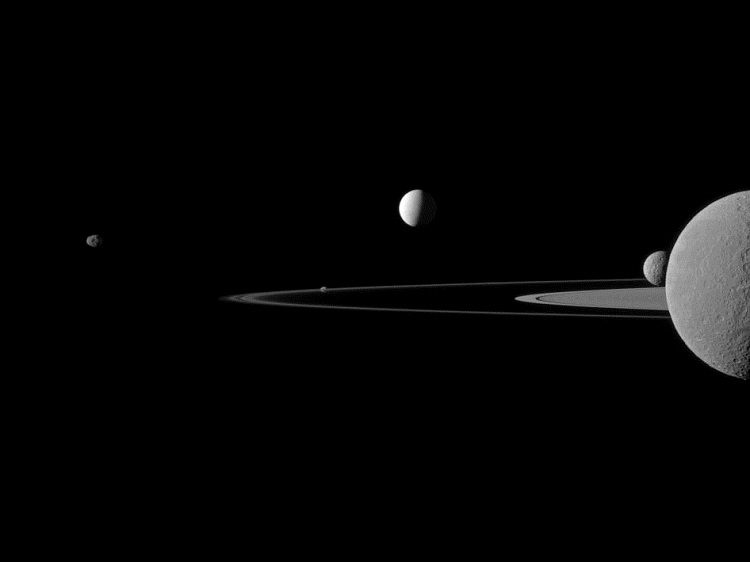Unter dieser Rubrik wird die Saturn-Galerie hiermit eröffnet und beinhaltet Aufnahmen welche leider in den Medien untergehen.

Quintet of Moons
A quintet of Saturn's moons come together in the Cassini spacecraft's field of view for this portrait.
Janus (179 kilometers, or 111 miles across) is on the far left. Pandora (81 kilometers, or 50 miles across) orbits between the A ring and the thin F ring near the middle of the image. Brightly reflective Enceladus (504 kilometers, or 313 miles across) appears above the center of the image. Saturn's second largest moon, Rhea (1,528 kilometers, or 949 miles across), is bisected by the right edge of the image. The smaller moon Mimas (396 kilometers, or 246 miles across) can be seen beyond Rhea also on the right side of the image.
This view looks toward the northern, sunlit side of the rings from just above the ringplane. Rhea is closest to Cassini here. The rings are beyond Rhea and Mimas. Enceladus is beyond the rings.
The image was taken in visible green light with the Cassini spacecraft narrow-angle camera on July 29, 2011. The view was acquired at a distance of approximately 1.1 million kilometers (684,000 miles) from Rhea and 1.8 million kilometers (1.1 million miles) from Enceladus. Image scale is 7 kilometers (4 miles) per pixel on Rhea and 11 kilometers (7 miles) per pixel on Enceladus.
The Cassini-Huygens mission is a cooperative project of NASA, the European Space Agency and the Italian Space Agency. The Jet Propulsion Laboratory, a division of the California Institute of Technology in Pasadena, manages the mission for NASA's Science Mission Directorate, Washington, D.C. The Cassini orbiter and its two onboard cameras were designed, developed and assembled at JPL. The imaging operations center is based at the Space Science Institute in Boulder, Colo.
Image credit: NASA/JPL-Caltech/Space Science Institute
Image addition date: 2011-09-12
